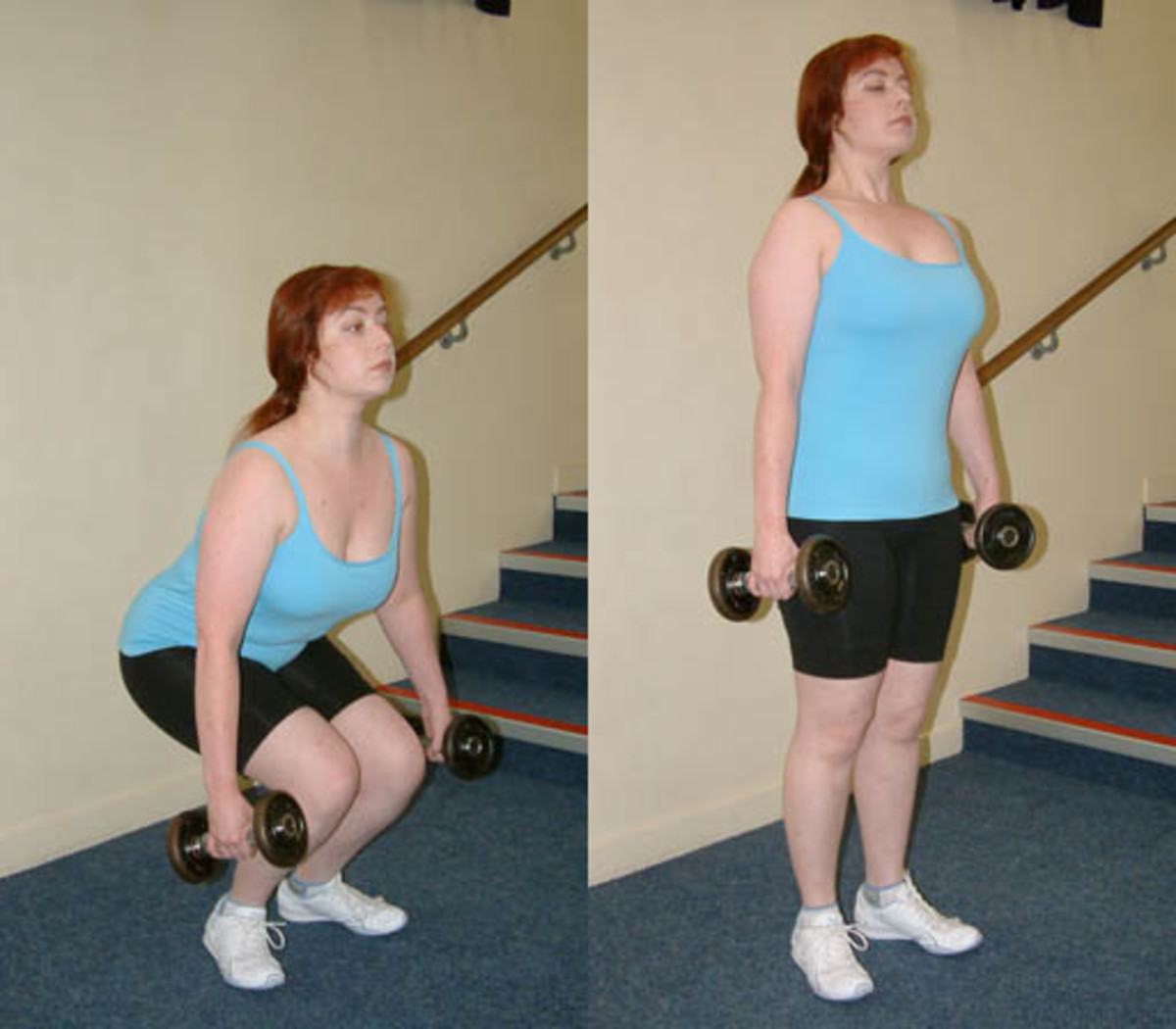Yoga vs Strength Training

Overview
There is a lot of confusion as to what the true benefits are from yoga. Many yoga instructors insist that all you need is to do yoga for all of your health and fitness needs. Some of the claims are:
- Increased tone and definition
- Fat loss
- Improved flexibility (with hot yoga being especially good for this)
- Better mental focus
- A deeper meditative state
- Better aerobic capacity
- Youthful zeal
These are pretty good claims. My wife and I are often asked questions regarding yoga and the listed benefits. More often than not, the propoganda regarding yoga is so strong our clients think that they should quit strength training and focus exclusively on yoga to get the results they want. So let's take a close examination of what yoga can and cannot do, and then compare it to what strength training can do.
Yoga's claimed benefits
To begin with, let us examine the benefits of yoga and see what it really can do.
- The claim of increased tone and definition. The claim is that by doing yoga poses and holding them for a period of time works the muscles hard enough to bring about tone and definition without "bulking up". The claim also states that yoga "elongates" the muscles (pilates practitioners make the same claim. BTW, you cannot "elongate" a muscle. Its length is determined by it's origins and insertions. They do not change with exercise). The truth is that by holding the poses as such (usually about 90 seconds per pose), the muscles do have to work to a certain degree of intensity. They do work the fast twitch muscles (for a more information about slow twitch/fast twitch fibers, click here), but not to the degree needed to bring about meaningful tone and definition. The body weight exercises and yoga poses simply aren't challenging enough. One way to tell if you are working hard enough is how hard you have to breath while exercising. If you do not have to breath hard, you are not exercising hard enough to increase tone. You do not experience this with yoga.
- Fat loss. Yes and no. Like all other exercise programs, you will burn more calories than sitting on the couch. Figure about 200 to 300 calories. It is not very much. You can replace it with a candy bar or a couple of glasses of wine. It does not have a good "after burn" that you get from more intense exercise programs. This effect burns many more calories from higher intensity exercise such as strength training than from lower intensity exercise such as yoga. Fat loss simply has more to do with taking in less calories on a daily basis than you burn. In other words, pay closer attention to your diet than your yoga sessions for fat loss.
- Improved flexibility. Yoga is good for this benefit. You can improve your flexibility, but does that improve your fitness? Having great flexibility is overrated. You can actually overstretch your ligaments leading to reduced stability of the joints. This opens up the possibility of injury. Once the ligaments are overstretched, they cannot shrink back. The damage is done. Some flexibility is good, a lot is bad. If you do yoga, do not go too deep into the poses, and stay away from poses that do not align the joints properly. I need to say a word or two about hot yoga. The heat does allow you to get a greater range of motion in your poses, but be careful of going too far. Remember, once the ligaments are stretched, they do not go back.
- Better mental focus and a deeper meditative state. Yoga does a very good job with these benefits. The original goal of yoga is for inner work and meditation. It does this well.
- Better aerobic capacity. Not so much. To improve aerobic capacity, you need to have your heart rate elevated for a period of time (at least 15 minutes of steady state), or spikes into the anaerobic zone for at least 15 minutes. That never happens with yoga.
- Youthful zeal. The meditative aspect of yoga helps lower stress. This does help the body fight the ageing process.
Strength training benefits
Now let us examine the benefits of strength training.
- Improve tone and definition. Strength training is one of the best forms of exercise to increase tone and definition. It challenges the fast twitch fibers to get stronger. As one gets stronger, one sees more tone and definition.
- Fat loss. Strength training does a much better job with fat loss for two reasons: adding more muscle increases your basal metabolic rate (calories your body burns at rest), and because of the aforementioned after burn. These two factors make a big difference with the calorie in/calorie out equation.
- Flexibility. For the most part, you do not need to engage in a flexibility program for healthful benefits. During strength training, when you work a muscle through it's full range of motion you actually work on both the strength and flexibility aspect. However, if you have tightness in certain muscles (such as tight hamstrings or rounded shoulder), a good stretching program is beneficial.
- Better mental focus. Strength training is very effective for this benefit as well. To work your muscles to fatigue, you must have mental focus. The more experience you have with strength training, the better your mental focus will be.
- A deeper meditative state. Strength training in and of itself does not work on meditation. The focus is on getting stronger. However, I have done a lot of inner work and practiced meditation, and in so doing I combined the two. I have had great success with reaching deeper states of calm. In a later article, I will explain how you can do it too.
- Better aerobic capacity. Strength training done the Hystrength(sm) way does improve your aerobic capacity. When I workout, I keep my heart rate high. At some points it is as high as 185 beats a minute, other times around 120, but the average is 140 beats per minute. This challenges my heart and lungs just as well as a good aerobic exercise program.
- Youthful zeal. Strength training is the best type of exercise for this. It increases testosterone and human growth hormone production. These two hormones are responsible for keeping the body healthy and young. Personally, I believe that if there is one exercise that is the fountain of youth, strength training is it. Nothing comes close.
Where does this leave us?
Taking a look at the benefits of both yoga and strength training, we see that yoga alone cannot bring about all the benefits of health. It needs help. Yoga is great for improving flexibility and relieving stress, along with improved mental focus. It does not, however, do a good job of improving tone and definition, along with increasing aerobic capacity and strength. By taking a close examination of the benefits of both yoga and strength training, it is clear one needs to do strength training to see all the benefits most people desire. Yoga can be done, but strength training should be done. Do not give up strength training to take up yoga thinking you will get all the health benefits you want from yoga alone. If you enjoy yoga, do it, but do your strength training too.








